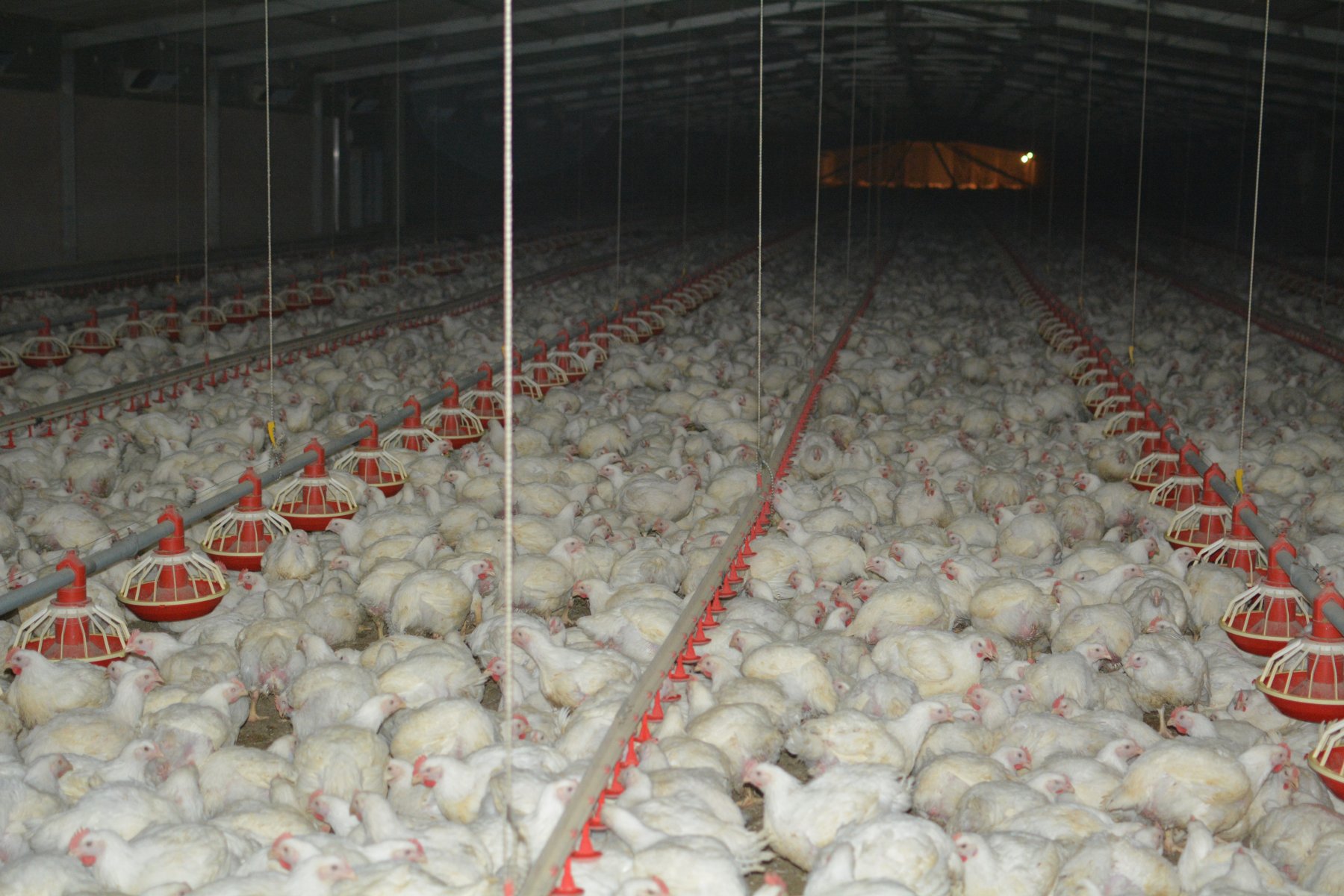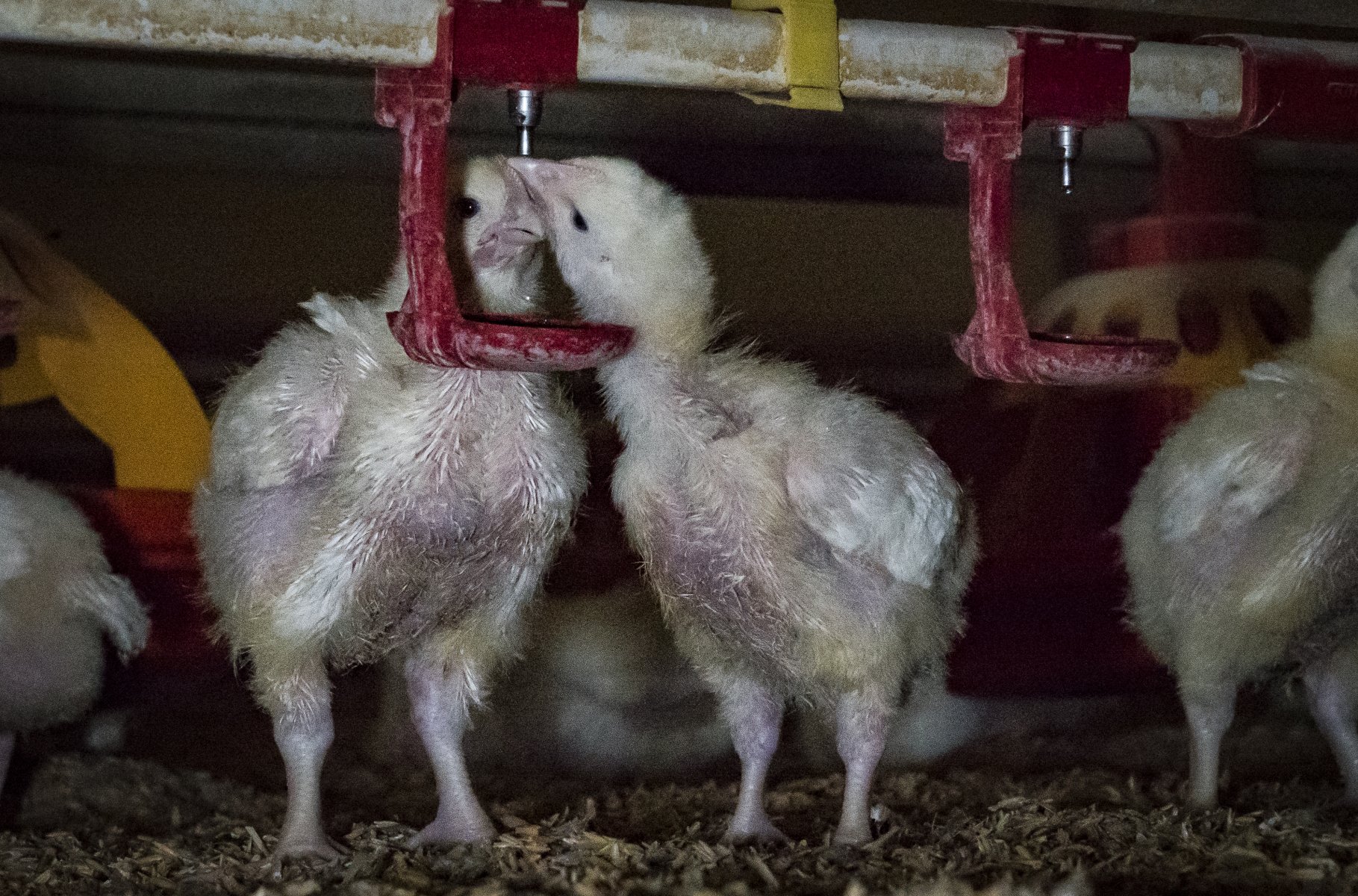On the farm
Meat chickens in total confinement systems are farmed in large sheds. The sizes of the sheds can vary, however typical sheds are 150 meters long and 15 meters wide, housing up to 40,000 chickens in each. The largest sheds can house up to 60,000 broiler chickens.
Only 10 to 15% of chickens raised for meat are housed in ‘free-range’ systems, and these chickens will endure the same suffering as any other at the point they are slaughtered.

A standard broiler shed.
On typical free range farms there can be between 3 and 10 sheds housing up to 320,000 chickens.
Feed and watering systems in broiler sheds are all automated. On some farms, chickens can go days without being checked on by farmers, living among dead and dying birds whose bodies have failed them before reaching slaughter weight.

Broiler chickens live on the same litter from the time they are chicks to the time they reach slaughter age. Consequently, chickens live on wet, soiled litter for the majority of their lives.
Chicken urine produces ammonia, a colourless gas with a distinctive smell. High levels of ammonia produced in broiler bird sheds causes the birds’ eyes to burn, while resting on the soiled litter can also cause sores/burns on their bodies and lead to a condition known as footpad dermatitis.


